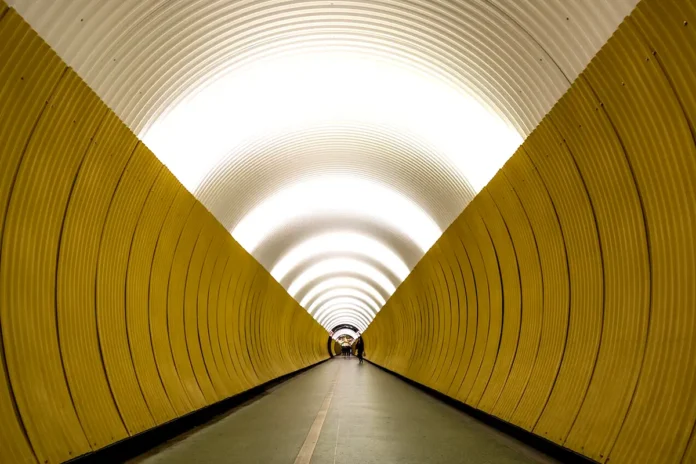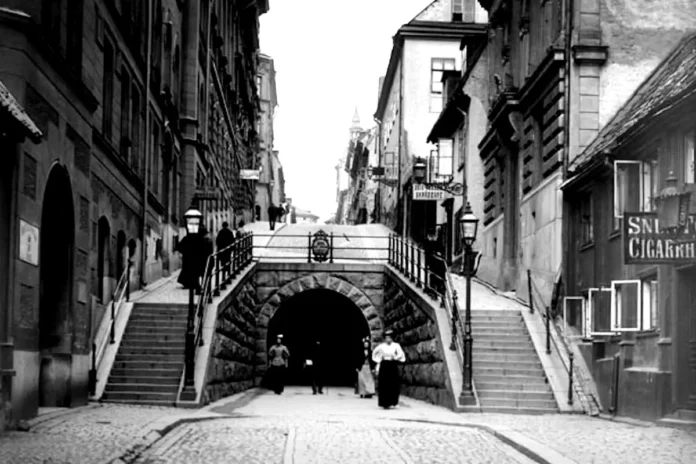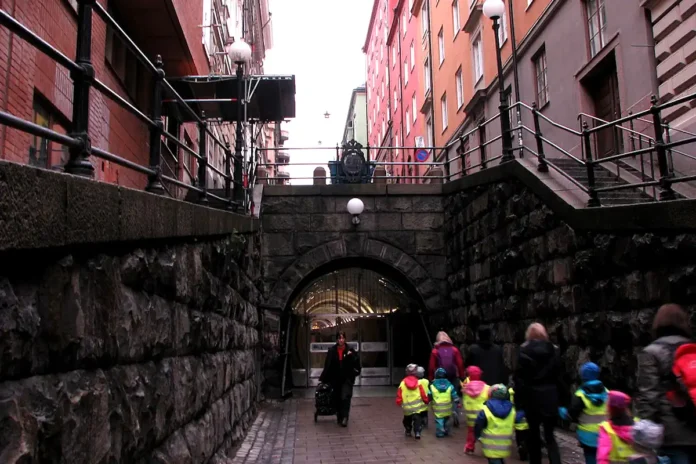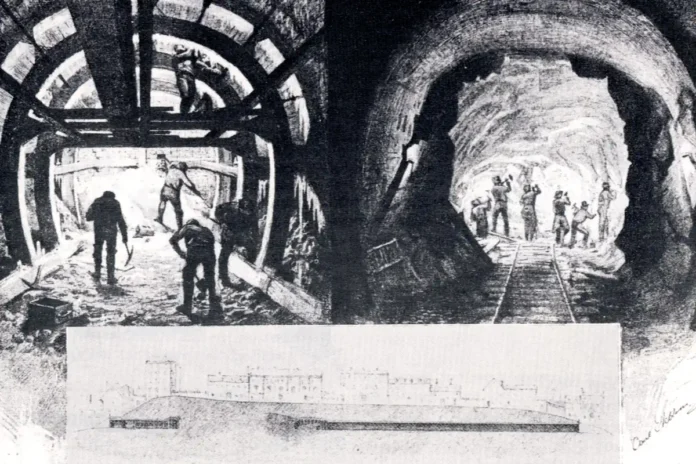Brunkeberg Tunnel: A passage through Stockholm’s core
The Brunkeberg Tunnel (Brunkebergstunneln) is a bike and pedestrian route that runs through the Brunkeberg Ridge in Stockholm’s Norrmalm neighborhood. The ridge that divided the busy neighborhoods of Norrmalm and Östermalm geographically gave rise to the tunnel’s concept in the middle of the 19th century. The tunnel’s potential to ease traffic problems in the expanding city was highlighted in the first recorded proposal for the project, which surfaced in 1863.
In 1884, construction began
Under the direction of engineer Knut Lindmark, construction started in 1884, although he faced many difficulties because of the unstable soil and fractured rock. Cutting-edge methods were used, such as freezing the ground to solidify it and enable safe excavation free from collapse hazards. King Oscar II officially opened the tunnel on June 9, 1886, following two years of arduous construction.
Brunkebergsåsen: The geological backbone of Stockholm
One of Stockholm’s most notable geological features, the Brunkeberg Ridge (Brunkebergsåsen), has been integral to the growth of the city. This esker, which is a section of the wider Stockholmsåsen, runs through the Norrmalm neighborhood and has long served as a natural border between the Östermalm and Norrmalm neighborhoods.
Brunkebergsåsen is a remnant of glacial activity that was formed during the last Ice Age. Sorted sand and gravel made up the ridge, which was formed by sediment left behind by meltwater streams that flowed beneath the ice. The north-south orientation of this geological formation mirrors the retreating movement of the ice sheet in the Stockholm region.
Architectural features of the tunnel
The Brunkeberg Tunnel measures 3.9 meters (12 feet 8 inches) in height, 4 meters (13 feet) in width, and roughly 231 meters (758 feet) in length. The late 19th-century engineering prowess of its design is evident in its practical passageway that makes it easier for cyclists and pedestrians to move around. Its original purpose was horse traffic, but it has since evolved to meet contemporary demands while maintaining its historic charm.
The tunnel’s distinctive architectural elements, such as its arched ceilings and moody lighting, welcome guests as they enter and create an engrossing atmosphere. It is a desirable location for photography enthusiasts because the walls are lined with materials that highlight both historical significance and contemporary updates.
Modern-day significance
The Brunkeberg Tunnel, which offers a practical shortcut between David Bagares gata and Tunnelgatan, is still a vital component of Stockholm’s infrastructure today. It is a crucial link for cyclists and pedestrians wishing to get around the city without having to climb over hilly streets, and it is free to use every day from 7 AM to 10 PM.
In Stockholm, the tunnel has also turned into a cultural icon. On occasion, it holds events and art exhibits that increase its allure for both residents and visitors. Photographers who want to capture its distinct character against the backdrop of urban life frequently visit because of its unique setting.
Visiting tips
When planning your visit to the Brunkeberg Tunnel:
- Points of Access: David Bagares gata and Tunnelgatan are the entrances to both ends of the tunnel.
- Photography: Take your camera so you can document its distinctive architectural details and moody lighting.
- Explore Nearby Attractions: After touring the tunnel, think about taking a leisurely stroll through the lively streets of Norrmalm or exploring nearby attractions like Hötorget Square.
Conclusion
The Brunkeberg Tunnel is evidence of Stockholm’s inventiveness and dedication to using engineering creativity to solve urban problems. From its 19th-century beginnings to its present function as a pedestrian-friendly walkway, this historical treasure gives tourists a chance to fully experience Stockholm’s rich past.






